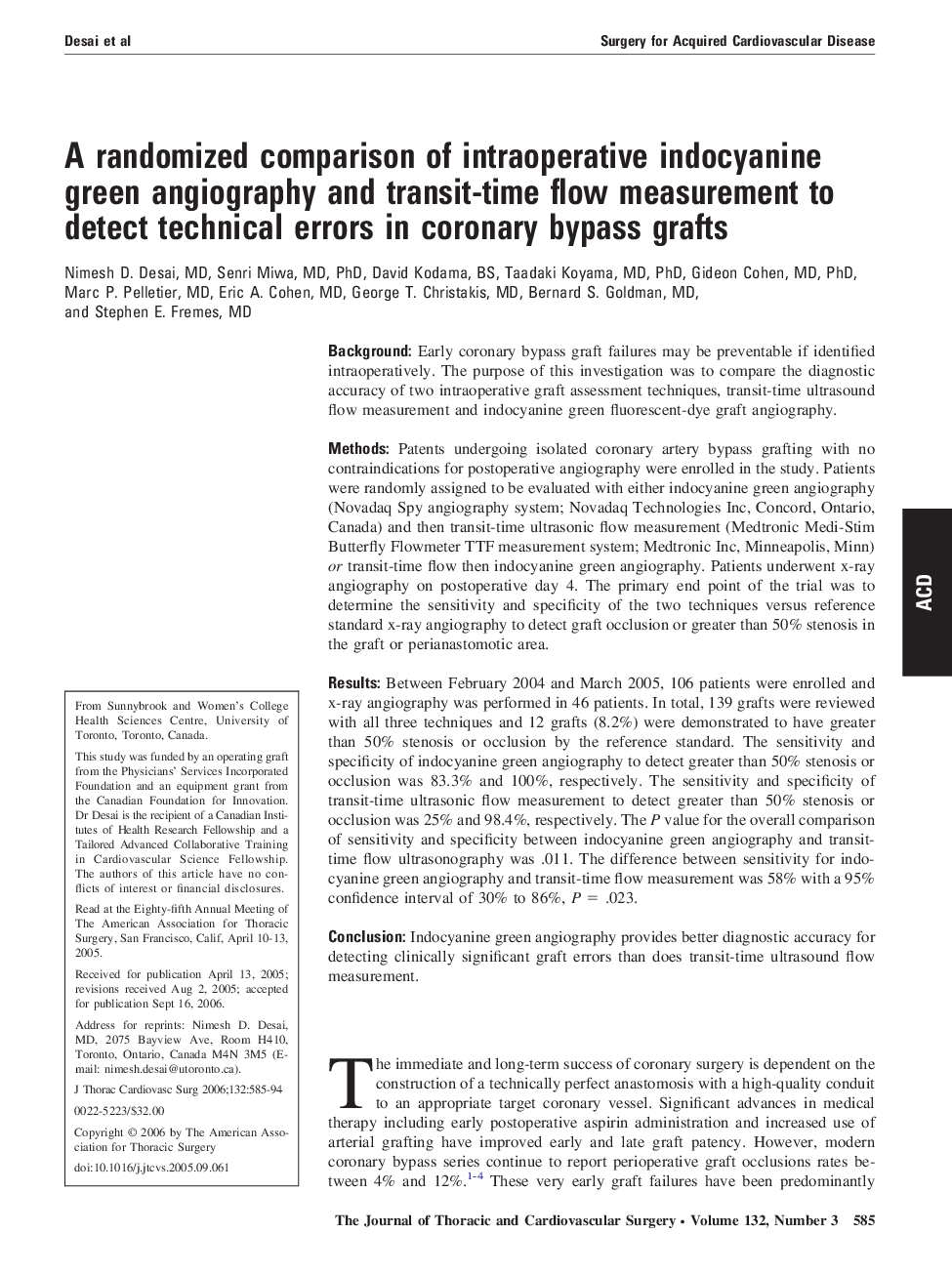| Article ID | Journal | Published Year | Pages | File Type |
|---|---|---|---|---|
| 2986675 | The Journal of Thoracic and Cardiovascular Surgery | 2006 | 10 Pages |
BackgroundEarly coronary bypass graft failures may be preventable if identified intraoperatively. The purpose of this investigation was to compare the diagnostic accuracy of two intraoperative graft assessment techniques, transit-time ultrasound flow measurement and indocyanine green fluorescent-dye graft angiography.MethodsPatents undergoing isolated coronary artery bypass grafting with no contraindications for postoperative angiography were enrolled in the study. Patients were randomly assigned to be evaluated with either indocyanine green angiography (Novadaq Spy angiography system; Novadaq Technologies Inc, Concord, Ontario, Canada) and then transit-time ultrasonic flow measurement (Medtronic Medi-Stim Butterfly Flowmeter TTF measurement system; Medtronic Inc, Minneapolis, Minn) or transit-time flow then indocyanine green angiography. Patients underwent x-ray angiography on postoperative day 4. The primary end point of the trial was to determine the sensitivity and specificity of the two techniques versus reference standard x-ray angiography to detect graft occlusion or greater than 50% stenosis in the graft or perianastomotic area.ResultsBetween February 2004 and March 2005, 106 patients were enrolled and x-ray angiography was performed in 46 patients. In total, 139 grafts were reviewed with all three techniques and 12 grafts (8.2%) were demonstrated to have greater than 50% stenosis or occlusion by the reference standard. The sensitivity and specificity of indocyanine green angiography to detect greater than 50% stenosis or occlusion was 83.3% and 100%, respectively. The sensitivity and specificity of transit-time ultrasonic flow measurement to detect greater than 50% stenosis or occlusion was 25% and 98.4%, respectively. The P value for the overall comparison of sensitivity and specificity between indocyanine green angiography and transit-time flow ultrasonography was .011. The difference between sensitivity for indocyanine green angiography and transit-time flow measurement was 58% with a 95% confidence interval of 30% to 86%, P = .023.ConclusionIndocyanine green angiography provides better diagnostic accuracy for detecting clinically significant graft errors than does transit-time ultrasound flow measurement.
